Abstract
BACKGROUND: Despite interest in the relationship between patient satisfaction and consultation performance, there is little information about how other characteristics of general practitioners, practices and patients influence satisfaction with consultations. AIM: To identify characteristics of patients, practices and general practitioners that influence satisfaction with consultations. METHOD: In 1991-92, a consultation satisfaction questionnaire (CSQ) was administered to 75 patients attending each of the 126 general practitioners in 39 practices. Further questionnaires were used to collect information about the practice (such as total list size, training status, fundholding status and presence of a personal list system) and about the general practitioners (age, sex, whether vocationally trained, a trainer or a trainee, and the number of patients booked in the appointment system per hour). Stepwise multiple regression was undertaken to identify characteristics of patients, practices or general practitioners that influenced satisfaction. RESULTS: The mean of the response rates to the patient questionnaire for each general practitioner was 76.6%, with a standard deviation (SD) of 17.8. Practice characteristics associated with falls in satisfaction were an increasing total list size, the absence of a personal list system and its being a training practice. If more patients were booked in the appointment system per hour, satisfaction with the perceived length of consultations fell. Patient characteristics associated with falls in satisfaction were increased age and an increased proportion of male patients. The only characteristic of general practitioners associated with lower levels of satisfaction was increasing age. The sex of general practitioners did not influence satisfaction. CONCLUSIONS: The findings of this study give further support to the importance of a personal service in determining patient satisfaction in general practice. General Practitioners need to review the organization of practices to ensure an acceptable balance between the requirements of modern clinical care and the wishes of patients. Future studies should take account of the many variables that can influence patient satisfaction.
Full text
PDF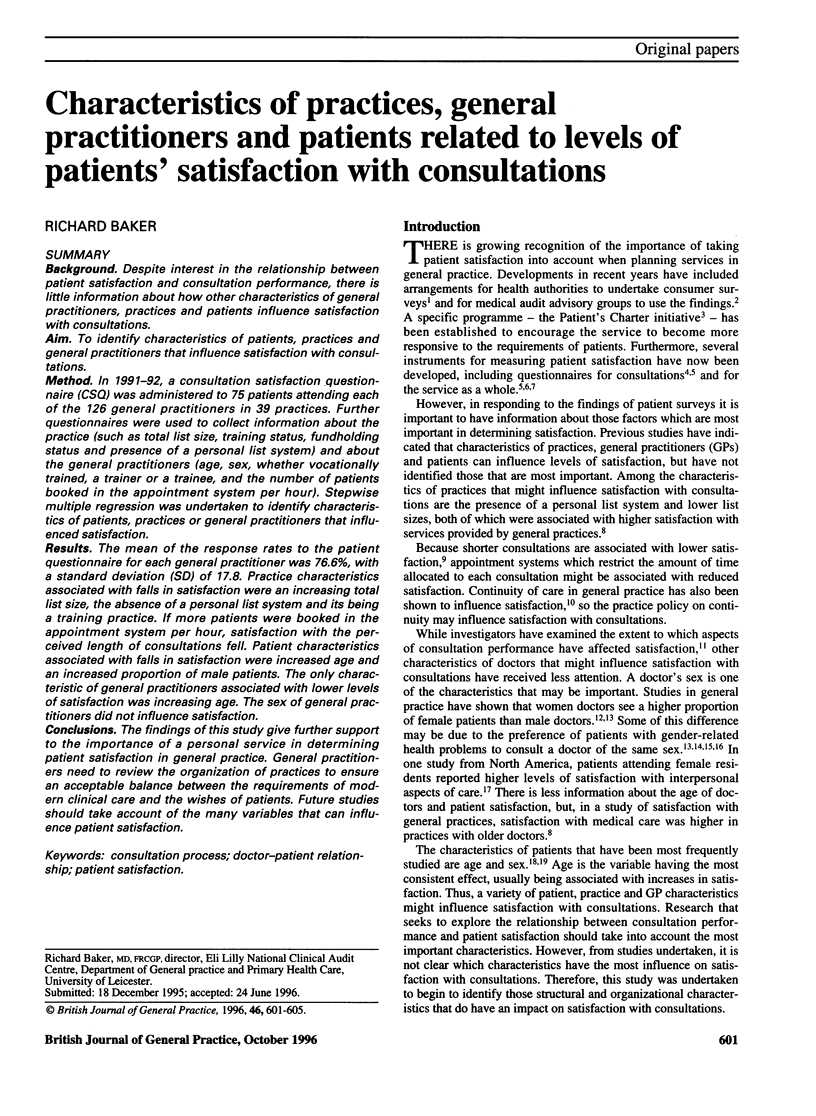
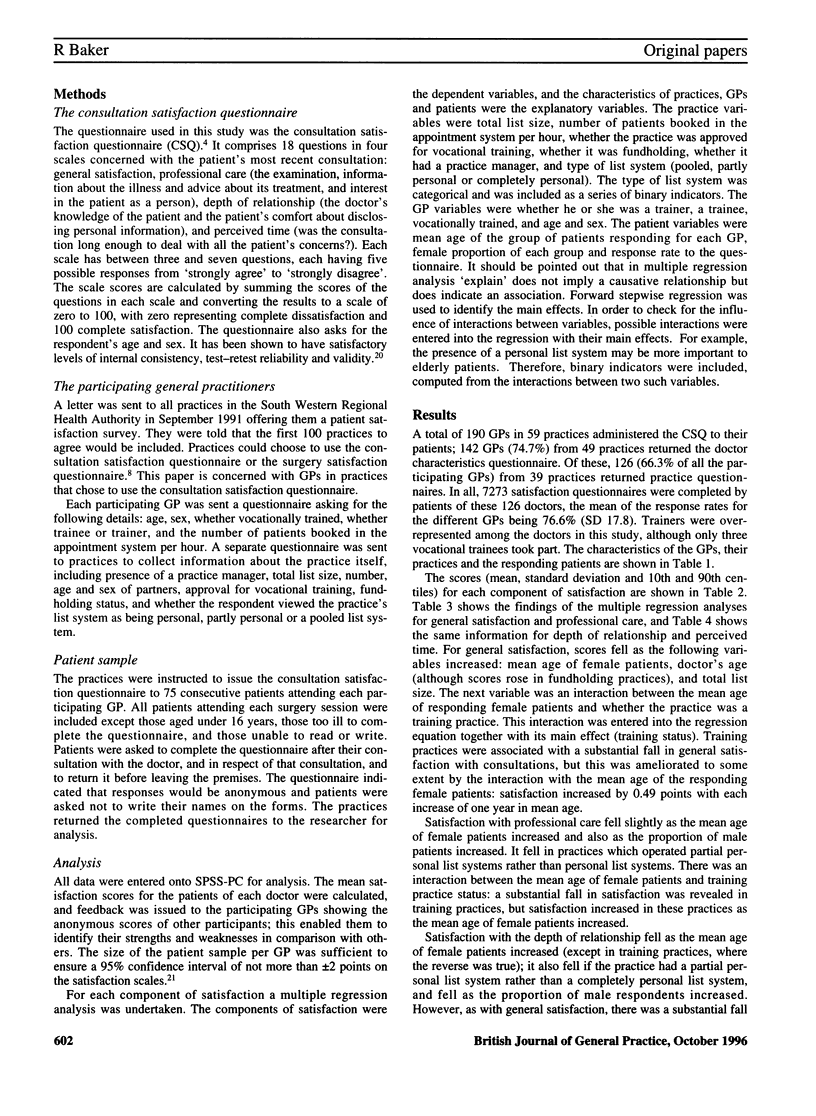
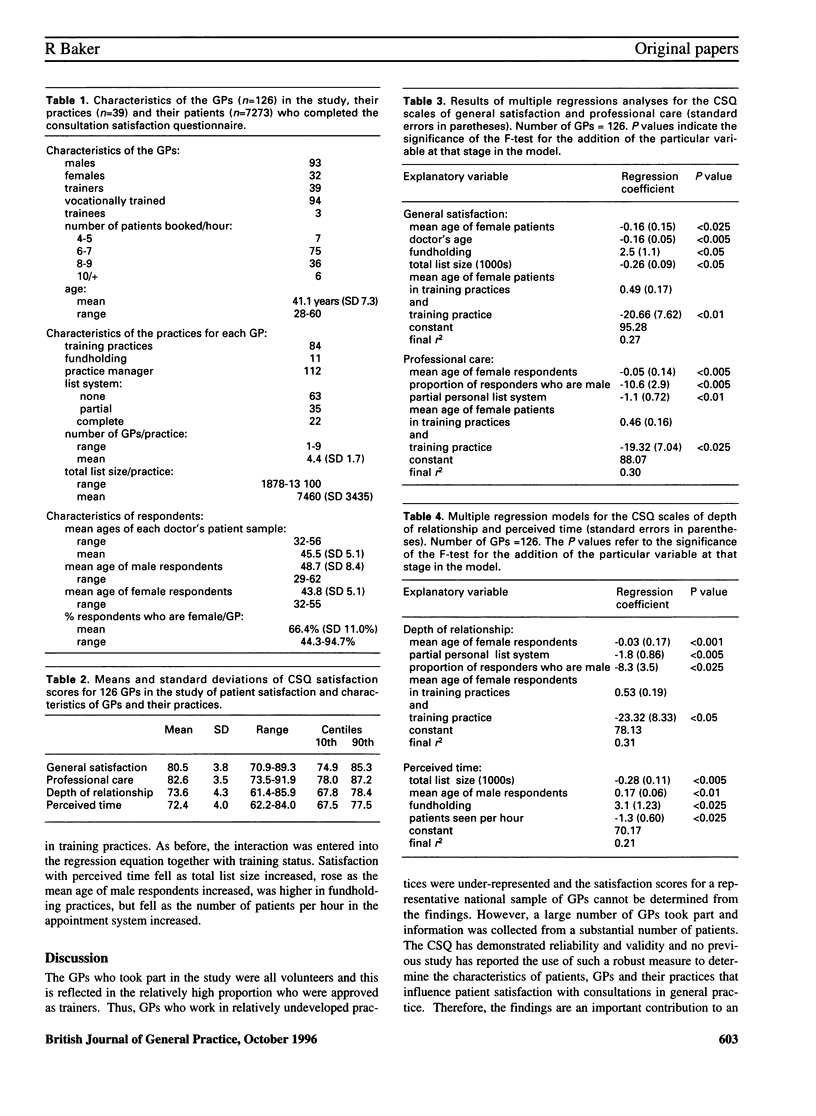
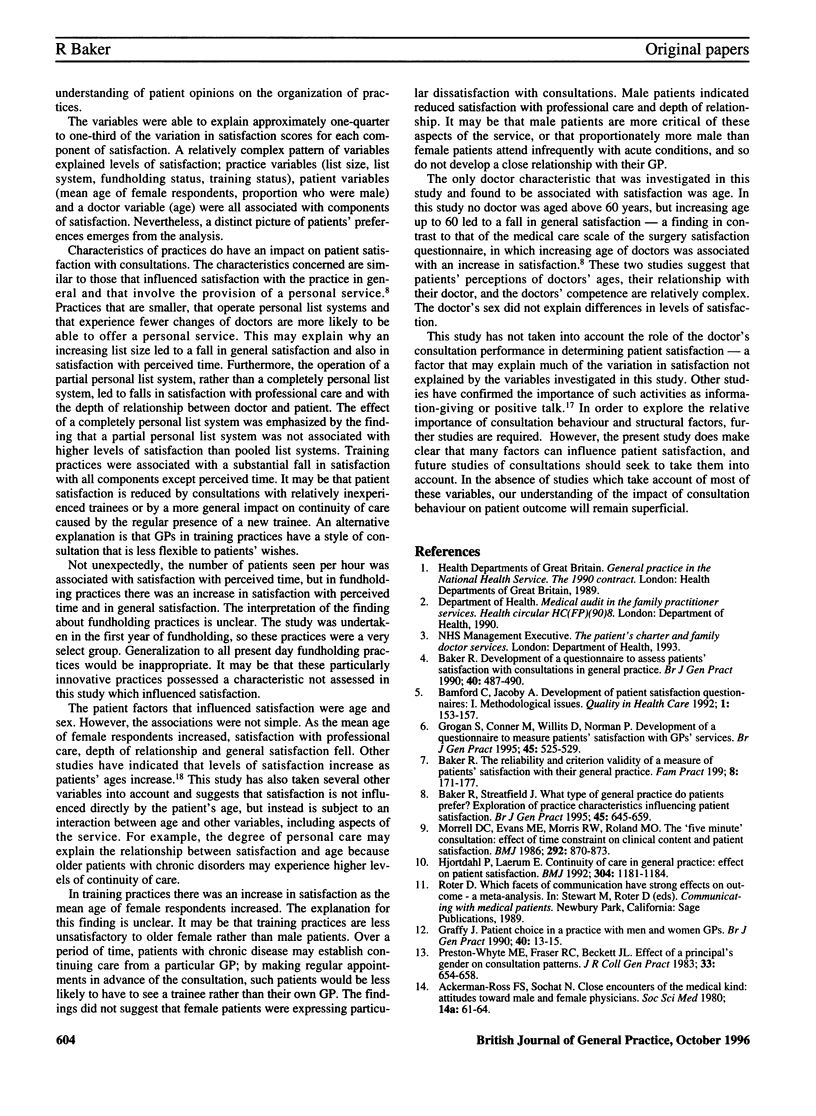
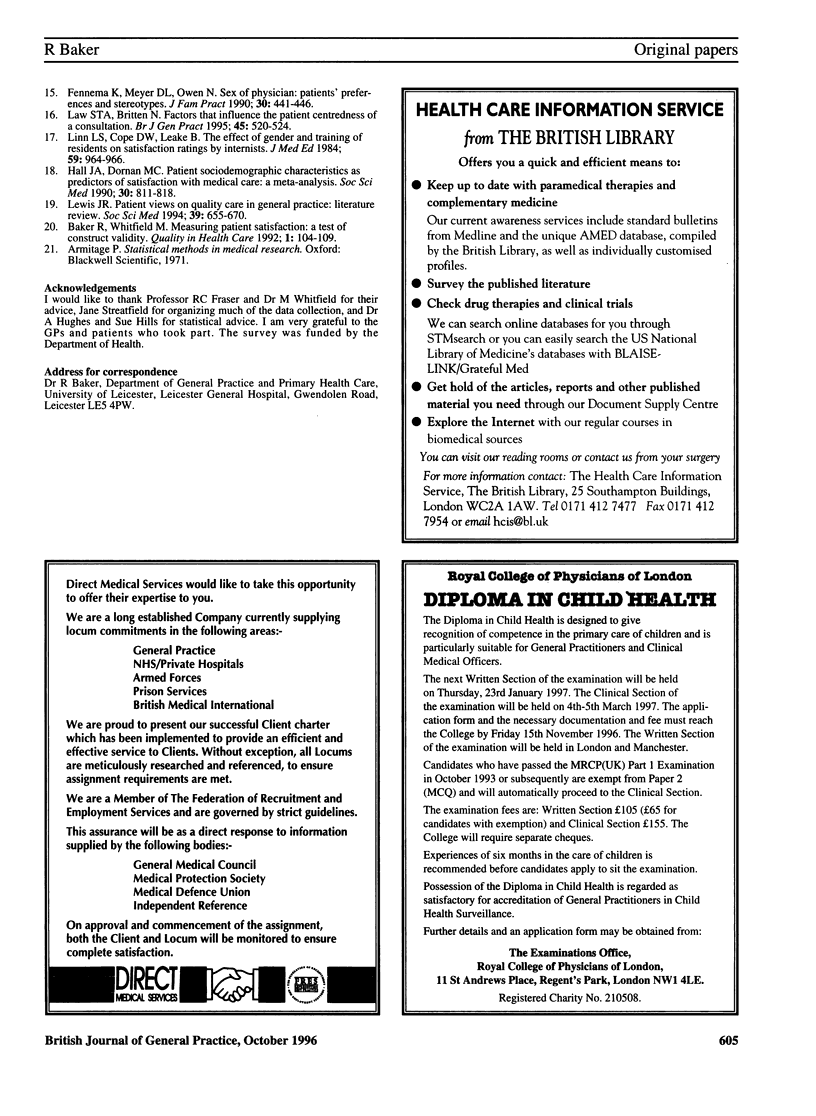
Selected References
These references are in PubMed. This may not be the complete list of references from this article.
- Ackerman-Ross F. S., Sochat N. Close encounters of the medical kind: attitudes toward male and female physicians. Soc Sci Med. 1980 Jan;14A(1):61–64. [PubMed] [Google Scholar]
- Baker R. Development of a questionnaire to assess patients' satisfaction with consultations in general practice. Br J Gen Pract. 1990 Dec;40(341):487–490. [PMC free article] [PubMed] [Google Scholar]
- Baker R., Whitfield M. Measuring patient satisfaction: a test of construct validity. Qual Health Care. 1992 Jun;1(2):104–109. doi: 10.1136/qshc.1.2.104. [DOI] [PMC free article] [PubMed] [Google Scholar]
- Bamford C., Jacoby A. Development of patient satisfaction questionnaires: I. Methodological issues. Qual Health Care. 1992 Sep;1(3):153–157. doi: 10.1136/qshc.1.3.153. [DOI] [PMC free article] [PubMed] [Google Scholar]
- Fennema K., Meyer D. L., Owen N. Sex of physician: patients' preferences and stereotypes. J Fam Pract. 1990 Apr;30(4):441–446. [PubMed] [Google Scholar]
- Graffy J. Patient choice in a practice with men and women general practitioners. Br J Gen Pract. 1990 Jan;40(330):13–15. [PMC free article] [PubMed] [Google Scholar]
- Grogan S., Conner M., Willits D., Norman P. Development of a questionnaire to measure patients' satisfaction with general practitioners' services. Br J Gen Pract. 1995 Oct;45(399):525–529. [PMC free article] [PubMed] [Google Scholar]
- Hall J. A., Dornan M. C. Patient sociodemographic characteristics as predictors of satisfaction with medical care: a meta-analysis. Soc Sci Med. 1990;30(7):811–818. doi: 10.1016/0277-9536(90)90205-7. [DOI] [PubMed] [Google Scholar]
- Law S. A., Britten N. Factors that influence the patient centredness of a consultation. Br J Gen Pract. 1995 Oct;45(399):520–524. [PMC free article] [PubMed] [Google Scholar]
- Lewis J. R. Patient views on quality care in general practice: literature review. Soc Sci Med. 1994 Sep;39(5):655–670. doi: 10.1016/0277-9536(94)90022-1. [DOI] [PubMed] [Google Scholar]
- Linn L. S., Cope D. W., Leake B. The effect of gender and training of residents on satisfaction ratings by patients. J Med Educ. 1984 Dec;59(12):964–966. doi: 10.1097/00001888-198412000-00009. [DOI] [PubMed] [Google Scholar]
- Morrell D. C., Evans M. E., Morris R. W., Roland M. O. The "five minute" consultation: effect of time constraint on clinical content and patient satisfaction. Br Med J (Clin Res Ed) 1986 Mar 29;292(6524):870–873. doi: 10.1136/bmj.292.6524.870. [DOI] [PMC free article] [PubMed] [Google Scholar]
- Preston-Whyte M. E., Fraser R. C., Beckett J. L. Effect of a principal's gender on consultation patterns. J R Coll Gen Pract. 1983 Oct;33(255):654–658. [PMC free article] [PubMed] [Google Scholar]


